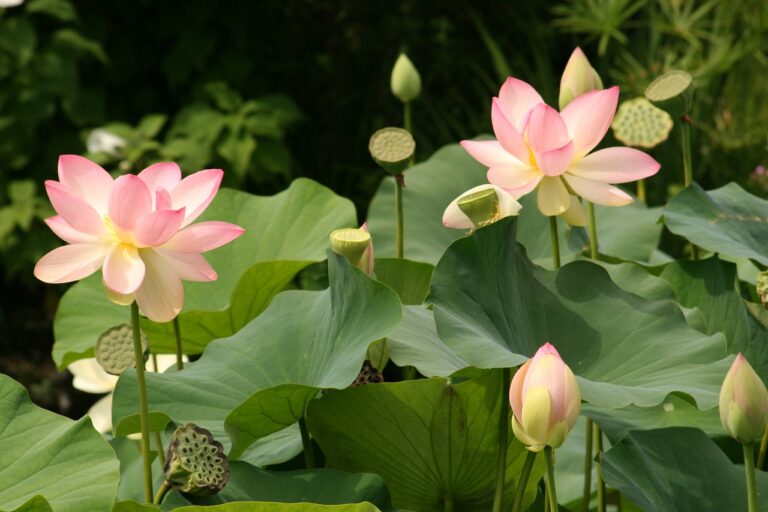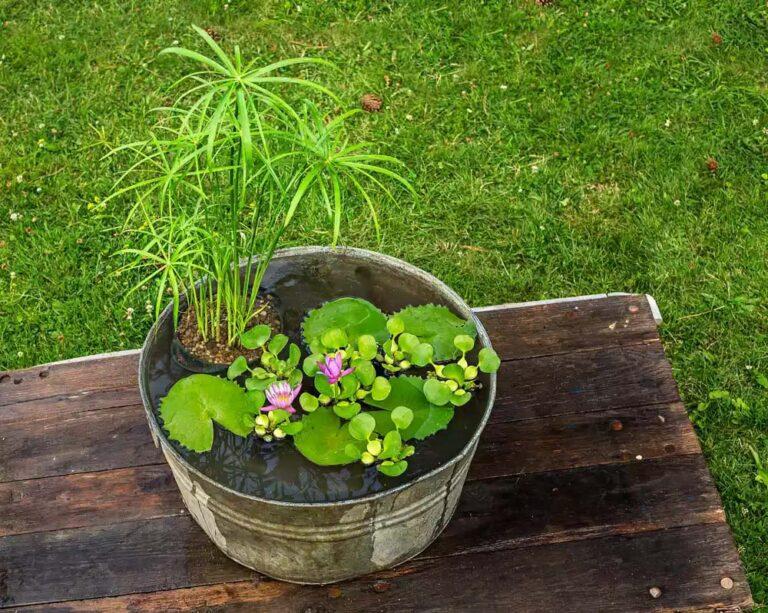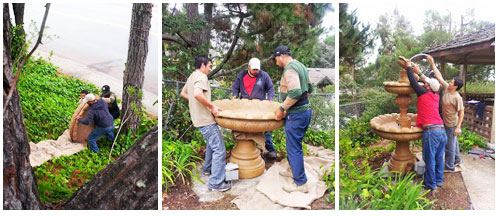How to Care for Cast Stone Fountains and Outdoor Decor
Tricker’s exclusively offers fountains of the utmost quality. Our extensive search and rigorous testing of cast stone outdoor decor ensure that we provide you with nothing but the finest products. These fountains are meticulously crafted, ensuring durability and longevity, and are available in color finishes that have been thoroughly weather-tested. Our selection of manufacturers was carefully made, prioritizing those with exceptional customer service.
Color Finish. Looking to spruce up or give a complete makeover to your cast stone outdoor decor? Look no further, as we’ve got you covered! Simply reach out to us and we’ll be more than happy to assist you. Our refurbishing kits are designed to bring back the vibrant color of your decor. It’s important to keep in mind that maintaining the same color is ideal, as trying to refinish with a lighter shade may prove challenging, as the darker color tends to show through. So, let us help you revitalize your outdoor decor and make it shine like new again!
Minor Nicks. To conceal small nicks, dings, and scratches, apply a small amount of paint that closely matches the color. If the surface has a black or dark antique appearance, opt for black paint; for lighter antiques, choose white. Gently apply the paint to the scratch, then remove any excess while seamlessly blending it into the surface. This technique will result in a nearly imperceptible touch-up.
White Residue? The presence of white residue on your fountain’s surfaces can be attributed to temperature and evaporation. In regions with high mineral content, particularly calcium and lime in the local water supply, this occurrence is inevitable. To mitigate this issue, it is recommended to rinse the fountain more frequently and replace the water regularly. Alternatively, the use of distilled water or water from a water softener can completely eliminate or reduce the buildup of minerals, respectively.
Sludge, Algae, Cloudiness. In order to maintain the clarity of fountain water and prevent the accumulation of sludge, algae, and cloudiness, it is advisable to begin with a fountain that is already clean and filled with fresh water. To achieve this, we suggest using Hydrogen Peroxide at a ratio of one tablespoon per gallon. It is important to note that chlorine, as well as harsh chemicals like TSP or CLR, should not be used to clean or clarify the water as they may damage the finish, pumps, and tubing. Additionally, it is crucial to keep the fountain free from leaves and debris, and regularly clean the pump using a mixture of water and vinegar in equal parts.
Winter Care. All cast stone is negatively impacted by extreme and sudden fluctuations in temperature and humidity — the “freeze-thaw” effect can cause minor cracks to become major. Cast stone naturally expands and contracts in response to changes in the climate, which is why expansion joints are incorporated into concrete sidewalks and driveways. While minor surface shrinkage cracks may occasionally occur, preventing crumbling and cracking is possible if you adhere to the following guidelines:
- Ensure that water does not accumulate and freeze in fountain bowls and shells.
- Prevent water from collecting and freezing in planters and birdbaths.
- Avoid placing statuary or pedestals in a pool of ice.
Cast stone products that are exposed to freeze-thaw conditions have the potential to fracture or break as a result of the mechanical pressure exerted by water freezing and expanding against the concrete surface. If you cannot store your fountain, birdbath, planter, statue, or bench indoors during cold winter weather, it is imperative to shield them from the accumulation and exposure to ice.
In order to safeguard your cast stone fountain during freezing winters, it is advisable to utilize a fountain cover that envelops the entire unit. We offer a wide range of sizes and shapes to cater to your specific needs. These covers are designed to be sturdy and perfectly fitted for almost any fountain. Additionally, they come equipped with a convenient bottom drawstring to ensure a secure fit and to keep it in place on windy days. In humid environments, place dry rags or towels in the bowls to absorb any moisture that may occur.
To protect birdbaths and planters that cannot be brought indoors, it is recommended to place them on elevated ground to prevent them from being encased in ice. Furthermore, covering them will provide an extra layer of protection. To maintain a thawed and accessible water source for your feathered friends, consider using a birdbath heater. This will ensure that the water remains unfrozen, allowing birds to drink and bathe comfortably.







